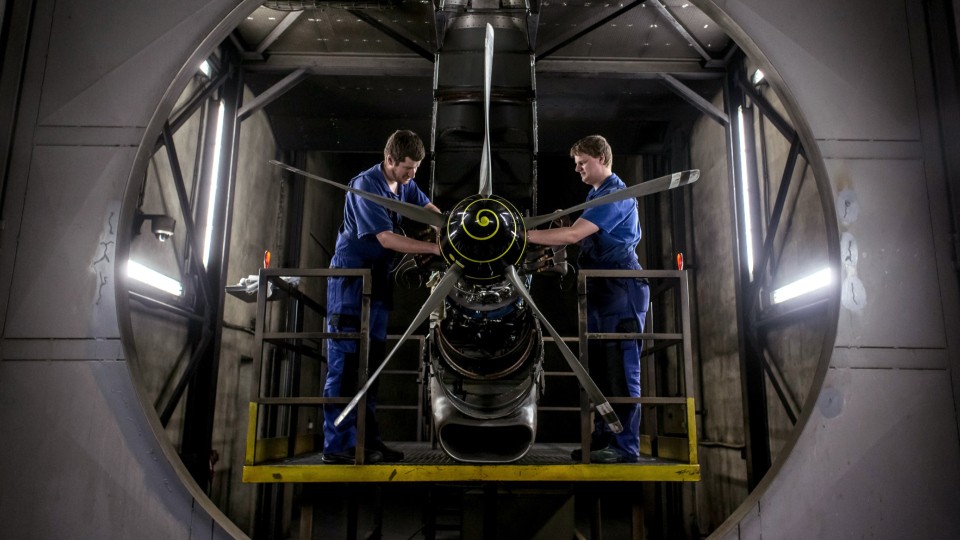Aerospace Engineers
Aerospace Engineer, Design Engineer, Flight Test Engineer, Systems Engineer
What they do:
Perform engineering duties in designing, constructing, and testing aircraft, missiles, and spacecraft. May conduct basic and applied research to evaluate adaptability of materials and equipment to aircraft design and manufacture. May recommend improvements in testing equipment and techniques.
On the job, you would:
- Formulate mathematical models or other methods of computer analysis to develop, evaluate, or modify design, according to customer engineering requirements.
- Plan or conduct experimental, environmental, operational, or stress tests on models or prototypes of aircraft or aerospace systems or equipment.
- Formulate conceptual design of aeronautical or aerospace products or systems to meet customer requirements or conform to environmental regulations.
Knowledge
Engineering and Technology
- product and service development
- design
Math and Science
- arithmetic, algebra, geometry, calculus, or statistics
- physics
Arts and Humanities
- English language
Manufactured or Agricultural Goods
- manufacture and distribution of products
Skills
Basic Skills
- thinking about the pros and cons of different ways to solve a problem
- reading work related information
Problem Solving
- noticing a problem and figuring out the best way to solve it
People and Technology Systems
- thinking about the pros and cons of different options and picking the best one
- measuring how well a system is working and how to improve it
Abilities
Verbal
- read and understand what is written
- communicate by speaking
Ideas and Logic
- make general rules or come up with answers from lots of detailed information
- notice when problems happen
Math
- choose the right type of math to solve a problem
- add, subtract, multiply, or divide
Personality
People interested in this work like activities that include ideas, thinking, and figuring things out.
They do well at jobs that need:
- Innovation
- Achievement Orientation
- Intellectual Curiosity
- Cautiousness
- Integrity
- Attention to Detail
Technology
You might use software like this on the job:
Analytical or scientific software
- The MathWorks MATLAB
- Wolfram Research Mathematica
Presentation software
- Microsoft PowerPoint
Development environment software
- C
- Microsoft Visual Studio
Education
Education: (rated 4 of 5)
bachelor's degree or
master's degree
usually needed
master's degree
usually needed
Job Outlook
Bright
New job opportunities are very likely in the future.
Explore More
- Aerospace Engineering & Operations Technologists & Technicians
- Avionics Technicians
- Electro-Mechanical & Mechatronics Technologists & Technicians
- Mechanical Engineering Technologists & Technicians
- Mechanical Engineers
You might like a career in one of these industries:
See more details at O*NET OnLine about Aerospace Engineers.






